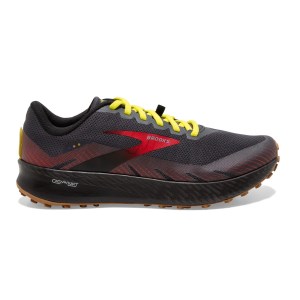Trail Run Hub: Top 3 Trail Racing Shoes For 2022
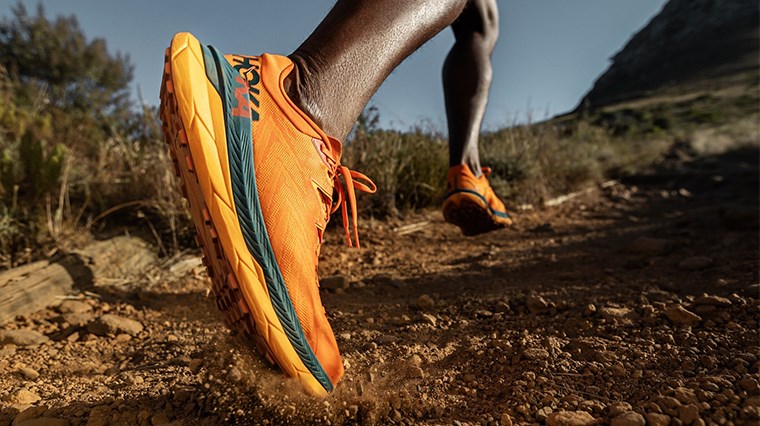
Congratulations! If you’re reading this blog, you have just taken the first step towards gearing up for the adventurous and challenging journey of trail racing. Bring those two words together – trail & racing – and you get a truly invigorating experience – combining the perilous beauty of off-road running with a competitive, speed-driven spirit.
Honest to what a racing shoe is all about, trail racing shoes are typically engineered for neutral foot types, being free of stability technologies that may add non-essential weight or bulk. These ultra-lightweight designs are best suited to experienced trail blazers with intrinsic foot strength, potentially lacking in the support and cushioning characteristics of their heavier, more rugged trail shoe cousins.
To avoid injury, before lacing in up trail racing shoes you want to have a firm trust in your natural biomechanics and a real-world appreciation of what the tools you were born with – your feet – can do for you. If you have a history of running in cushioned trail running shoes or max cushioned trail running shoes that tend to do the heavy lifting in terms of protection and support, the racing shoe category will take time to get used to – so tread wisely. If you're a beginner trail runner, consider a lightweight trail running shoe for race day before taking a deep dive into the trail racing category.
However, that isn’t to say a racing shoe can’t be comfortable. With the clever engineering of leading running shoe brands, minimalism in the spirit of generating more speed doesn’t have to be a complete trade-off to comfort. Yes, there may be sacrifices in shedding support or trimming traction, but remember that it is when brands work within restraints that some of the best engineering concepts come to light.
Our top 3 trail racing shoes– the Brooks Catamount with the heart of a marathon shoe, the spirited On Running Cloudventure Peak that never settles for anything but the top, and the dual carbon-plated Hoka One One Tecton X – have proven themselves to be super lightweight, fast and adventure-ready across a variety of terrain and distances.
With less weight to work with in the racing shoe category, Brooks, On Running and Hoka One One have had to dig deep and design with ingenuity to be honest to the signature feel of their brand while providing speed that can outrun the pack on the trail and even feel natural conquering mountains.
Brooks Catamount: Lightweight feel of a road shoe & the adventurous spirit of a trail shoe
Overview
Energy-returning DNA Flash has made a name for itself. This high-performance, nitrogen-infused midsole has been put to work in the Brooks Hyperion Tempo and Brooks Hyperion Elite 2 that have graced the marathon scene. Rolling over this advanced midsole technology into a trail running shoe – the Brooks Catamount – gave trail racers access to this bouncy yet supportive formula to shift the pace up a gear without muting ground feel.
On the whole, the Brooks Catamount is lightweight, fast and versatile – designed to tackle long distances off-road and any challenge the trail presents – from steep climbs to heart-racing descents.
Runners that usually stick to the road will be surprised by just how quick and responsive a trail running shoe can be – making easy work of challenging terrain without feeling bulky or ridged as one may expect from a trail shoe.
With the Brooks Catamount to cushion and support every stride, seasoned trail blazers have found their ideal match to cut seconds off their personal best in natural environments. Delivering a lightweight design for the level of protection they provide and snappy energy return, this is a race-ready ride for runners looking to run faster and further when the wild is calling.
With “100 Miles Of Run Happy” on the tongue, it’s no secret that Brooks' mission behind the Catamount was to create a trail shoe that can go the distance – from tempo runs to endurance racing off-road.
The original white colourway didn’t stay white for long as runners were keen to run through mud, dirt and wear any grit with pride - and we tip our cap to them. With striking and darker colourways now available, you can blaze over challenging terrain while your trail shoes stay looking like-new for longer, but either way it's the adventurous spirit and tech behind this trail shoe that really makes it shine.
Upper
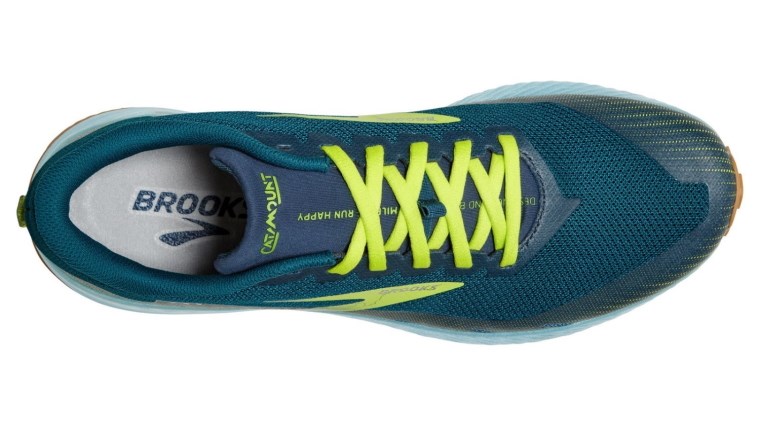
Wrapping your feet in trail-specific protection without feeling clunky like a traditional trail shoe, the Brooks Catamount gears you up for adventure. Thoughtful details in the upper create a barrier against debris including a half-bootie tongue and Mud Guard to keep sharp stones and twigs out.
As a cosmetic detail, you’ll notice the trail ‘map’ in the Brooks logo that gives a nod to the Western States Trail in California. The mesh itself is uncomplicated yet comfortable, dense enough to provide a secure hold on your feet while remaining breathable.
A rubber overlay borders the mesh for enhanced protection and structure for a locked-in fit while adding a touch extra durability to the toe box to reinforce against collisions with natural hazards. As we dive further back from the toe box, the forefoot mesh feels more flexible to prevent any restrictions to your movement.
Strategically placed drainage slits ensure these trail running shoes don’t trap in water – allowing your feet to dry fast after an encounter with a shallow stream or sloshy conditions.
Depending on your preference, the tongue could use a touch more padding, being on the thinner side. If you look on the underside of the tongue, you’ll see perforations to help save weight and to create a ventilated feel.
The combination of the tongue, no-nonsense lacing system and thin overlays work together to provide a structured fit that reduces friction to aid in blister prevention. Brooks have found a sweet spot – offering a supportive fit without bolstering the weight.
Not as spacious as the Altra family, the toe box is roomy without going overkill. A wider toe box like this has multiple benefits, allowing air to circulate between your toes to ward off blister-causing conditions, facilitating the splaying of your toes to stabilise your movement and accommodating the natural expansion of your forefoot on longer runs.
The heel cup is free of any rigid plastic – you can push it in with your thumbs with little resistance, yet it still provides an element of structure with the overlay around the back. All-up it’s a flexible design, so you won’t find any pressure points around the back of the heel. This level of comfort lets you be a champion of your off-road fitness, offering a distraction-free ride.
As a bonus feature that you must feel rather than see, there are straps that join the lacing system to the midsole of the shoe for a more harmonious, locked-in feel. If you place your hand within the shoe and touch the sides underneath the lacing system from the inside, you’ll be able to feel what we’re talking about, with each eyelet having its own internal strap.
These straps sit between the exterior layer of mesh and the inner sockliner to create a locked-in fit – but it’s a design that isn’t going to irritate or be noticeable on the foot. It’s subtle yet effective.
Brooks has proven their eye for detail in every aspect of the upper – last but not least being the Gaiter tab at the heel to secure your gaiter in place.
Midsole
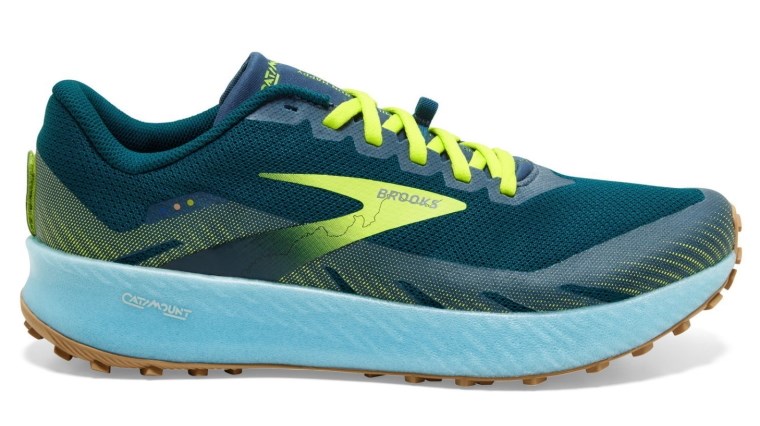
The DNA Flash midsole is a star example of the innovative engineering that running shoe brands have rolled out in recent years in the creation of ‘super foams’.
Most brands have their own unique, premium foam with Altra EGO, Nike ZoomX, Saucony EVERUN and Adidas Boost all weighing into the conversation and giving each running shoe a feel that’s signature to the brand.
Depending on the intended purpose of the running shoe and where it fits in your shoe rotation, the engineering behind these super foams can be tweaked by brands to make them lighter, more resilient, softer, springier or more responsive. It’s a constant process of experimentation and trial and error to give you real-world benefits when it comes to your comfort and performance.
When we look at the nitrogen-infused DNA Flash midsole, lightweight responsiveness is the best way to sum it up in two words.
The midsole engineering offers a subtle, rocker-like sensation that works with DNA Flash for an efficient stride. The density of DNA Flash is consistent from heel-to-toe so there are no breaks to the smooth, flowing feel. The balance of firmness and softness creates a snappy sensation and stability to increase your cadence without your knees or ankles taking a beating during long distance trail runs.
Your foot sits deeper into the trail running shoe (about level with the ‘Catamount’ model name on the side) rather than cradled on the surface of the midsole – allowing your feet and shoe to move as one and offering reliable support.
Even though this running shoe has a ‘trail-ready’ philosophy to its very core, as mentioned previously the DNA Flash midsole was transferred over from Brooks' premium marathon road shoes. It sheds the traditional expectations of a trail shoe being heavy and cumbersome on the foot, to have an attitude and feel more in line with a lightweight road shoe. Brooks achieved this all without compromising on the protection needed to conquer challenging terrain.
Speed comes more effortlessly in this well-thought-out design. Reserving your trail running sessions for slower, recovery-paced runs is a thing of the past with the Brooks Catamount inspiring you to be light and fast on your feet.
Outsole
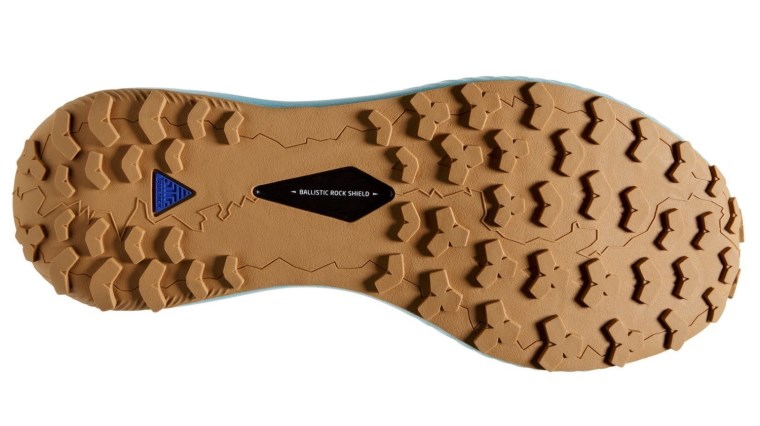
The TrailTack rubber outsole provides sticky traction for versatile grip. Multi-directional lugs help pull you uphill on steep climbs and brake on descents, with reverse-facing lugs at the rearfoot and forward-facing lugs at the forefoot. Some trail blazers have noted that the downhill traction could be more aggressive or the lugs more pointed for extra bite and braking power.
Nevertheless, the TrailTack compound is versatile and effortlessly handles a variety of terrain – from mossy wooden bridges, slick rocks, to bone-dry dirt trails. Although versatile, it prefers to stay on dry surfaces where possible. The low-profile lugs aren’t deep enough to get a solid grip in mud – but it all comes back to the purpose behind the shoe.
The Brooks Catamount is designed for speed and excels when running cross-country – so Brooks don’t want to unnecessarily bulk up the traction underfoot as this would lead to more weight. Flatter, well-maintained trails are where the Brooks Catamount can really fade into the background – and that’s a good thing. With a thinner, lighter and non-intrusive traction pattern, they ‘disappear’ on the foot so you can focus your attention on chasing your next PB.
The Ballistic Rock Shield is positioned between the midsole and outsole. It provides protection against sharp stones and sticks, and stability on changing and rugged terrain without going overkill on rigidity. You get enough flexibility to run naturally and pick up the pace - staying honest to its identity as a trail racing shoe.
SPECS
- Support: Neutral
- Upper: Mesh
- Midsole: Brooks DNA Flash
- Offset / Drop: 6mm
Men
- Weight: 272g / 9.6oz
- Width: D (standard)
Women
- Weight: 249.5g / 8.8oz
- Width: B (standard)
On Cloudventure Peak: Conquer mountains at speed
Overview
On Running provides a completely unique feel and experience. From first step-in, many runners have converted to On Running for its Swiss-engineered, precision-driven designs with patented On CloudTec which we’ll discuss in further detail below.
Weighing in at 260g in the men’s model and 210g in the women’s model, the latest generation of the On Cloudventure Peak is fine-tuned for trail mountain racing – delivering On Running’s signature “running on clouds” sensation in every stride.
Lightweight protection all-year round with the ability to tackle mild winter conditions, it’s a worthy choice for mid-distance trail racing on challenging and mountainous terrain.
With On Running being a brand that was proudly “born in the Swiss Alps”, the On Cloudventure Peak lives up to the reputation to chase not only the peak of a mountain summit, but the peak of your performance.
How does its performance translate to the Australian bush? Unlike the Brooks Catamount that prefers tamer trails, the On Cloudventure Peak is fully capable of ‘roughing it’ on aggressive technical terrain and less-than-ideal conditions. It will keep you cool even as the temperature climbs under a scorching Aussie sun.
Alongside mountain racing, being a ‘climber’ at heart, the On Cloudventure Peak doubles up as a responsive off-road tempo training shoe – particularly when you have your sights set on a new PB – with a spirited, flexible and energetic ride for conquering hilly grounds and flying over trail hazards.
Why white? Like the original white colourway of the Brooks Catamount, the On Cloudventure Peak is a canvas of where you’ve been, with every grass stain or splash of mud a badge of honour to mark your journey. Some runners may not love coming to terms with the fact that their trail shoes won’t look like-new for very long, but we recommend embracing the dirt!
Upper
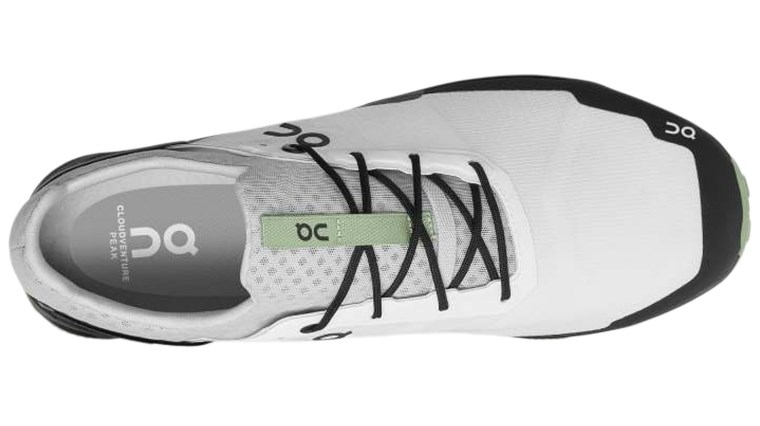
Thin, breathable and soft mesh in the form of ripstop material hugs your feet with the comfort of a sock thanks to the inner collar. This sleek and thoughtful design prevents unwanted friction that can result in chafing and hot spots.
The quick-drying upper allows heat and humidity to escape – so you don’t have to hide the On Cloudventure Peak away in your wardrobe when the colder months give way to an Aussie summer. It provides stretch to prevent your toes from being suffocated or restricted – accommodating the natural swelling of your forefoot during endurance runs in hot conditions.
Creating a shoe that’s race-ready and snug-fitting without being restrictive is a challenge, so we give two thumbs up to On Running for finding that balance. It lacks a traditional tongue design – running true to a ‘sock-like’ fit and having a minimal number of lace eyelets. For narrower foot types we recommend putting the slim laces to good use in a runner’s lock lace to achieve a sturdy lockdown.
The Mud Guard, being the darker rubber bordering the entire base of the upper including surrounding the sides of the toes and at the tip of the shoe, helps keep water out when skipping over shallow streams. It doubles up as a toe box protector for an element of protection when scraping against natural debris. However, be aware that wider foot types may experience rubbing on the sides of their toes as they expand during endurance runs as this material is less stretchy compared to the rest of the upper.
The support is just-right – providing a secure fit that prevents heel slippage during high-speed runs or charging uphill without limiting your movement and without feeling flimsy or loose on the foot.
The heel cup wraps securely to your rearfoot for a locked-in fit while remaining relatively flexible – keeping pressure on the calcaneus to a minimum and offering comfort for runners that have heel sensitivity. However, comfort isn’t purely based on the materials, but your personal perception of feel – and it may feel stiffer on some runner’s feet than others.
The ‘support frames’ or structures at either side of the heel are where On Running have strategically used extra rigidity in your favour, without it increasing your risk of discomfort or irritation. They complement the locked-in rearfoot fit, providing stability and security to keep you sure-footed and reduce lateral roll during high-speed running on uneven terrain. It’s an innovative design from On Running that eliminates the need of stiff and potentially irritating material directly behind the heel.
The Cloudventure Peak trades an element of protection for minimalism and flexibility – so it’s safe to expect that the feel of rocks and natural debris colliding with the upper won’t be as muted in comparison to stronger, more built-up designs. However, the upper doesn’t seem to tear or puncture easily and like any running shoe, it’s a balancing act between durability and lightness.
Keep in mind that a trail running shoe of this flexibility – both in the forefoot and heel - is best suited to runners with a high level of foot strength. If you have a history of wearing more structured or cushioned trail shoes like the Hoka One One Speedgoat family, the move to lighter, more flexible designs like the On Running Cloudventure Peak should be gradual to reduce your risk of injury.
For a more rugged and robust trail shoe with the same ‘personality’, the On Cloudventure 3 or On Cloudventure Waterproof 3 may be for you - and you can shop the On Cloudventure family here. In terms of what you want out of a trail racing shoe specifically, the On Cloudventure Peak hits the mark in leaning towards the lighter side of things.
Don’t get us wrong though – the On Cloudventure Peak is certainly adventure-ready and even as it approaches the 250km mark on varied terrain, the upper doesn’t show any excess signs of wear. Its improvements in durability compared to the original On Cloudventure Peak becomes even more obvious as we work our way further down the line of engineering components.
Midsole
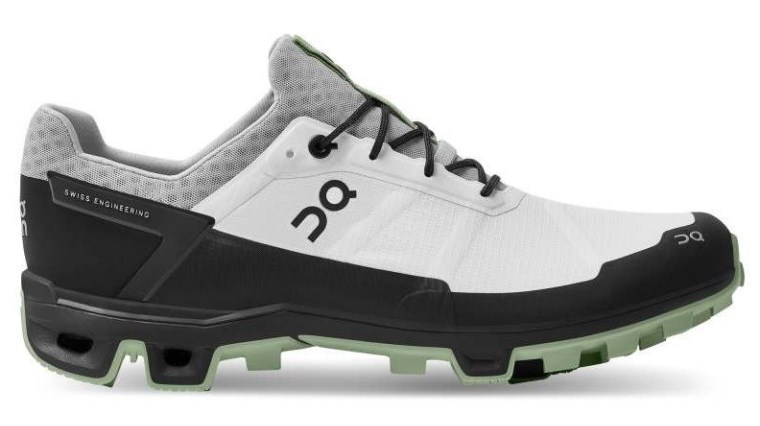
True to the philosophy behind On Running, the On Cloudventure Peak’s midsole doesn’t conform to running shoe ‘norms’ – and we wouldn’t have it any other way.
Sandwiched between the insole and outsole, On Running’s proprietary Speedboard has been put into action. In this latest evolution, the Speedboard has a split at the forefoot to allow your natural biomechanics to take over and allow each joint in your foot to move more independently – because the last thing you want is to feel stiff like a robot when you’re striving for a faster pace.
Experimenting with the shape and structure of plates can have different effects and more rigidity isn’t necessarily better. In this case the result is free-flowing agility, snappy responsiveness and an efficient, rolling gait to eat up dirt or snow. Whatever challenges are in your path, the split Speedboard provides an adaptive ride.
Racing shoes aren’t known for their cushioning as comfort usually takes a backseat to lightness and speed. Lacing up in the On Cloudventure, your feet will be pleasantly surprised with the element of cushioning they provide.
Conventional midsole foams have been put aside in favour of CloudTec – shock-absorbing pods strategically placed beneath the high-wear zone of the heel to provide compression on both the horizontal and vertical plane. Overall the cushioning is firm but just soft enough to prevent your feet from taking a beating on technical terrain. Unlike their road shoes like the On Cloudflyer or On Cloudflow, the CloudTec doesn’t run the entire length of the shoe which will talk more about more in the outsole section of this review.
With a low 4mm heel-to-toe drop, the On Cloudventure Peak feels fast, snappy and low to the ground to keep you connected to the natural surfaces beneath your feet and help your run more instinctively compared to max cushioned trail running shoes that dampen ground feel.
The Nike Terra Kiger 5 that we reviewed in Top 5 Lightweight Trail Running Shoes offers a similar experience to the On Cloudventure Peak. Having a discreet heel-to-toe drop isn’t for everyone but can be beneficial in promoting a more natural running form and more neutral posture.
Outsole

As we touched on in the midsole part of the review, turn the On Cloudventure Peak upside-down and you’ll see chunky Zero-Gravity CloudTec pods underneath the rearfoot. Truth be told, some runners may miss having CloudTec running the entire length of the shoe from heel-to-toe for consistent cushioning and protection against sharp stones and harder surfaces.
Towards the forefoot, On Running have made a strategic choice to include a combination of lugs in their place to gear this trail running shoe up for arduous hill climbs. This includes five thicker, deeper square-shaped lugs or cushioning elements beneath the ball of your foot that resemble the oversized CloudTec pods at the back, and smaller yet aggressive ‘L’ shaped lugs further up the shoe. Having variation in the sizes and shape of the lugs helps maximise your control on a variety of surfaces and inclines, offering an adaptive ride.
Each On Running shoe puts a different spin on CloudTec technology – from the On Cloudstratus that features two layers of Cloud elements underneath the foot for max cushioned protection, to the On Cloudventure Peak where their functionality doubles up as aggressive square-shaped lugs.
In their nature, CloudTec pods provide compression to soak up impact forces while towards the forefoot the shoe is firmer, providing a snappier sensation on toe-off that helps preserve energy and elevate ground feel.
With springy CloudTec at the back to protect against hard, repetitive landings downhill that drives significant force through the heel, and aggressive traction at the front with ‘true’ lugs to provide bite and snap on mountainous trails, you get the cushioning and traction you need, where you need it. Even when descending rocky slopes, you can trust in this ever-reliable protection.
For runners that prefer cushioning to extend consistently to the midsole, the On Cloudventure men's trail running shoes and On Cloudventure women's trail running shoes may be a better option, but keep in mind that the trade-off is that it runs at a higher weight and isn’t race-specific.
With CloudTec pods running the full-length of the original Cloudventure Peak, the traction simply didn’t match that of this latest evolution – a smart move from On Running considering the purpose behind this shoe, being first and foremost trail racing.
If you go face-to-face with the latest On Cloudventure Peak, you’ll notice the traction extends up the toe cap at the front to function as extra ‘teeth’ for bite during steep uphill runs. For extra grip, the CloudTec elements are reinforced with sticky rubber that also boosts durability. When you’re wearing a confidence-inspiring ride like the On Cloudventure Peak, that’s when hesitation is replaced with record-breaking speed.
Some runners may have gripe with the “stone collecting” design underfoot, with gaps between the CloudTec pods and in the prominent Y-shaped groove that virtually invites stones to nest in it – although it doesn’t tend to be as much of a problem as you may guess.
The Y-Shaped groove provides flexibility the entire length of the shoe to engage your feet fully, encouraging an efficient stride and helps the trail running shoe conform to the terrain for a more reactive feel. Occasionally you may require a quick stop to shake out any unwanted hitchhikers in the form of rocks, but they dislodge easily. The CloudTec pods at the back themselves are more filled in comparison to previous generations of the On Cloudventure family to prevent rocks from sneaking in.
On the flipside, the outsole engineering of the On Cloudventure Peak sheds mud effortlessly unlike trail shoes with a more shallow, tightly spaced lug pattern. The aggressive outsole configuration offers powerful traction and propulsion, thriving particularly on soft surfaces and even in wet or slushy conditions.
Compared to the original Cloudventure Peak, the MissionGrip rubber is a game-changer, extending the lifespan of your go-to On Running trail shoes. Many runners questioned whether the original Cloudventure Peak was up to the challenge of rugged terrain with concerns about the CloudTec pods being exposed to wear and potentially being susceptible to tearing. On Running listened, updated the On Cloudventure Peak with MissionGrip rubber, and trail blazers haven’t looked back.
MissionGrip offers a variety of grippy textures wrapping the base of the lugs and to reinforce the CloudTec elements at the rear – a healthy marriage of cushioning and traction. It’s a winning formula on ‘messy’ terrain and provides versatility on everything from slippery and sticky mud to grassy ridges and coastal trails. Where your grip may falter is on smooth, slick stone as there simply isn’t enough grab from the amount of rubber in contact with the ground.
Although runners may be tempted to take the On Cloudventure Peak to the road, we wouldn’t recommended it. That isn’t to say the durability can’t handle it, but more so that the level of cushioning required to run comfortably on the road simply isn’t there – being potentially jarring on hard road and not as forgiving as something like the max cushioned Hoka One One Stinson ATR 6 as a true hybrid trail-to-road shoe. It’s on the soft terrain, rough technical trails and in the mountains, closer to the clouds where the On Cloudventure Peak truly is in its element.
SPECS
- Support: Neutral
- Upper: Mesh
- Midsole: On Cloudtec
- Offset / Drop: 4mm
Men
- Weight: 260g / 9.2 oz (US 8.5)
- Width: D (standard)
Women
- Weight: 210g / 7.4 oz (US 7)
- Width: B (standard)
Hoka Tecton X: Dual carbon plates for off-road reactivity
Overview
Hoka One One is renowned for stretching limits, and with their release of the Hoka One One Tecton X, they pushed into a realm the brand has never been before – carbon-plated trail shoes.
It’s not just carbon fibre plated – its dual carbon fibre plated - and with a split personality to boot.
On the one hand (or foot) it’s an ever-reliable and efficient ultramarathon shoe with a rocker sensation that’s so smooth it’s barely discernible, pairing well with an easy-going pace over long distances. Turn up the speed and the Hoka Tecton X’s racing and competitive instincts are unlocked with ease – providing a propulsive and snappy ride that makes fast and easy work of challenging miles.
Nuances of this trail shoe resemble the new Hoka One One Speedgoat 5 such as the stack height and heel drop, yet at a surprisingly lower weight and higher responsiveness thanks to the dual carbon fibre plates.
Weighing in at 240g for the men’s model and 229g for the women’s model, the Tecton X provides a trail-ready Hoka experience that offers minimalism where you need it. Minimalism ends at the weight and at having a less aggressive outsole compared to its trail running cousins like the Speedgoat family which comparatively are more suited to and run more naturally on technical terrain.
When it comes to cushioning, the Hoka Tecton X goes all out to excel on your moderate distance training runs to serious ultra running and trail races. The Hoka Tecton X proves that just because it’s a racing shoe, comfort doesn’t have to be overlooked. It’s a stable ride that you can run and run in at speed without fatigue weighing you down.
Trail blazers are bound to gravitate to the Tecton X for a slice of Hoka’s ingenuity and a luxurious slab of comfort as they take it to the trail. As carbon fibre plates are still new to the trail scene, beginner trail runners may prefer to stick to tried and true trail technologies, whereas more seasoned races will potentially seek the excitement of this fresh and invigorating way of conquering off-road racing.
Upper

The jacquard mesh upper provides a foot-hugging fit - being thick enough to remain durable during endurance runs and breathable enough for when air flow is in high demand as the temperature or the intensity of your run escalates. A single layer mesh provides pure comfort without overcomplicating things unnecessarily and offers a smooth balance of stretch and support. The forefoot is spacious enough that wide feet won’t feel restricted or suffocated.
Of course, you want to enjoy running off-road without your carbon footprint being a burden on the environment. To that end Hoka One One have thoughtfully crafted the upper from recycled and vegan materials – a firm tick for eco-conscious trail blazers.
It offers adequate drainage – a plus for any trail shoe – and is free of overlays although a toe bumper has been added for essential protection. The toe box offers a spacious fit to allow your forefoot to expand naturally during your off-road adventures, while the midfoot and rearfoot wrap more precisely to your feet, similarly to the Speedgoat family.
The approach to the lacing system is entirely different to the On Cloudventure Peak, which has the laces further back from the forefoot and with fewer eyelets. In contrast, the Hoka Tecton X lacing extends virtually to the toes for a truly customisable fit – a feature that’s relatively rare but no less appreciated considering this trail running shoe is going to be conquering mountainous slopes and aggressive terrain at speed.
It makes a runner’s heel lock virtually redundant, as you can make minor tweaks independently across the length of the shoe to achieve a trustworthy fit. However, if you’re a fan of the runner’s heel lock lace don’t let that stop you as the shoe easily accommodates this with the extra eyelets. With a secure grab and unobtrusive heel counter that’s free of heel slippage, your trail running shoes can ‘vanish’ on the foot – feeling like a natural extension of your body.
The thin gusseted tongue and heel collar is spot on, with the perfect amount of padding. The tongue isn’t at all cumbersome and offers discreet padding beneath the laces without teetering towards the extreme. It conforms to the shape of your ankle, so it doesn’t dig in or irritate. There is no need to give your new trail shoes a makeover by trimming the tongue down to size.
Some runners have mentioned the material feels rough against the skin inside the shoe – so this is a running shoe not to be worn sockless, as some racers may prefer. With a mountain of technical running socks on the market from the thin and minimalist Steigen running socks, anti-blister and seamless comfort of Falke running socks, to the well-cushioned Balega running socks, we doubt this is a deal breaker.
At only 240g for the men’s model and 229g for the women's model, the weight is jaw-dropping and teamed with the flashy and fiery colourway, it’ll make you feel fast and add snap to your stride.
Midsole

Of course, carbon plates aren’t entirely new to the trail racing world – but it’s fair to say that Hoka’s take on a carbon plate is a rarity.
The Hoka Tecton X features a dual carbon plate – meaning technically it contains not one carbon plate, but two. For some runners, that idea may be enough to make you hesitate purchasing this shoe and question – isn’t one carbon plate rigid enough?
Lucky for you, two carbon plates doesn’t necessarily mean double the rigidity. The carbon-fibre plates run parallel but are not connected, working together but independently of one another. In fact, the name Tecton (short for tectonic – as in, the Earth’s tectonic plates) was inspired by the interaction of these carbon plates.
This means you get the responsiveness you’re seeking from a carbon fibre plated racing shoe, keeping you moving efficiently at speed without the level of rigidity being off-putting or overly intrusive. You can shake off any worries of them being too stiff, especially once you’ve put them through their paces and broken them in during the first 15 to 25km out of the box – which is only a blink of an eye in the long life of this trail shoe.
Alongside providing a degree of protection comparable to a rock plate, the reactive carbon plates provide a good counterbalance to the springy, plush and protective ProFlyX midsole. It’s another case of good things coming in twos – with the midsole featuring two foams of varying densities.
The layer of foam directly cradling the foot is buttery-soft, offering flexible cushioning. Beneath, CMEVA foam delivers responsiveness and liveliness in a lightweight package. The plates are wedged between the two to provide race-ready pop. It’s a healthy balance of comfort, snap, protection and ground feel.
Some runners did feel that the carbon fibre plates didn’t adapt easily to uneven terrain that offered a higher technical challenge, but were in their element on smoother and consistent mild to moderate technical terrain. If you’re hungry for a more technical challenge, the Hoka One One Speedgoat 5 that has just rolled out in 2022 may be a more fitting choice for you. They share the same specs in terms of stack height, but the Hoka One One Tecton X does come in at a lighter weight.
The rockered midsole with toe spring and heel bevel is a winning formula for ultra-smooth and effortless transitions to make easy work of technical terrain – keeping true to Hoka’s signature rocker sensation. Being on a wide base the Hoka Tecton X can feel a touch cumbersome on quick, shorter distances, whereas this becomes a key benefit during tempo runs on long stretches of trail – where that extra stability helps place your feet confidently, even as your legs fatigue.
Technically it’s a neutral trail racing shoe without any specific stability technologies. Nevertheless, during longer runs the stability feels pure and natural with the broader base – helping the Hoka Tecton X fully embrace its intended purpose as an ultra-racer.
Outsole
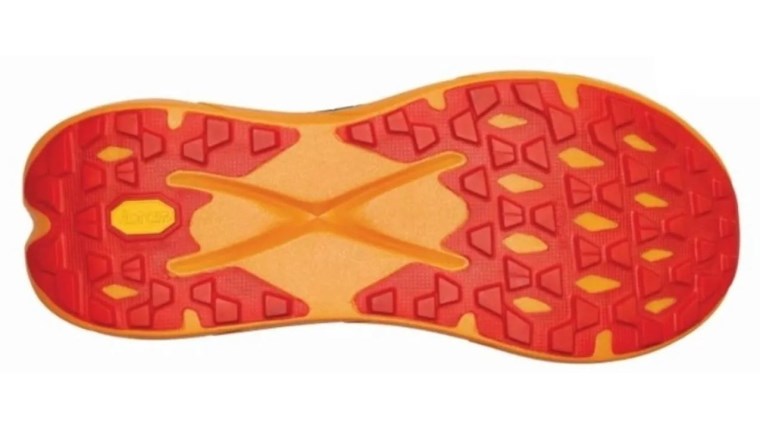
Durable, tacky and lightweight – the Vibram Megagrip Litebase is a race-ready outsole material. Flip the shoe upside down and you can see Hoka’s careful diligence in the placement of this rubber, leaving the midfoot exposed.
This is a strategic move – keeping in mind that impact stresses are less targeted to the midfoot compared to the high-impact zone of the heel. Therefore, reinforcing the shoe in the midfoot isn’t essential – and having less rubber where it’s not needed is rewarded with a lighter, more free-feeling sensation. On race day this carefully considered minimalism is exactly what you want on your feet.
The forefoot and heel are where sticky grip is the most valuable – to power uphill, brake downhill and move with sure-footed nimbleness and speed. If trust is something you’re looking for in a trail running shoe, than the Hoka Tecton X will quickly earn it with this slip-free traction, with mud or particularly technical spots their only challenge – and it doesn’t need to be aggressive to win you over.
These shallow, understated yet versatile 4mm lugs have had success on multiple terrain types. They’re a dream to run on densely packed trails where your running experience is smooth and flowing. Even if you’re a runner with a stretch of road between you and the trail, it’s nothing this shoe can’t conquer with the low-profile lugs able to run on the solid surface without feeling jarring.
For more aggressive traction, its cousin and competitor the Hoka Speedgoat 5 makes less compromises in grip – being happy to weigh in more than the Tecton X if that means having the power to turn advanced technical terrain into its personal runway.
However, when running further and faster on the trail is your goal while keeping free of non-essential weight, the Hoka Tecton X is undeniably a tempting option – making it fun to fly off-road.
SPECS
- Support: Neutral
- Upper: Mesh
- Midsole: Hoka One One ProFlyX
- Offset / Drop: 4mm
- Heel Height: 33mm
- Forefoot Height: 29mm
Men
- Weight: 240g / 8.5oz
- Width: D (standard)
Women
- Weight: 229g / 8.1oz
- Width: B (standard)
If you have any questions, queries or theories about these trail running shoes or any other running shoe, please contact our Sportitude shoe experts. We love hearing your thoughts, sharing our passion and providing our guidance to find the ideal fit for you.
For a more in-depth shoe fitting experience, you can book a free 15 minute video chat in a Live Fit session or make an appointment to discover your RunDNA at Sportitude Running@Hindmarsh.
Happy trail running!
If you liked this, you'll love:
Top 3 Lightweight Trail Running Shoes Of 2022
Top 3 Cushioned Trail Running Shoes Of 2022
Top 3 Max Cushioned Trail Running Shoes For 2022

